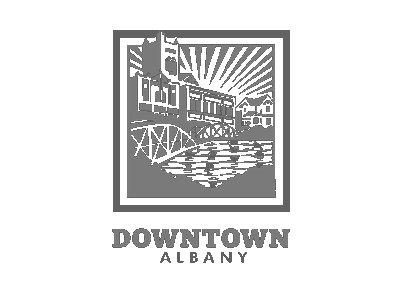Who pays this fee?
Account holders for developed properties within the city limits receive a statement for the city services fee.
What services am I getting for this fee?
Revenues from this help to maintain our service levels and programming for Fire, Library, Municipal Court, Park Maintenance, and Police, as well as making targeted investments in long-term cost reduction measures, enhanced park maintenance, and library materials.
I already pay a lot of money in property taxes. Don't my property taxes pay for these services?
If you live inside the city limits of Albany in Linn County, only $0.37 of each dollar you pay in property taxes goes toward City of Albany services. The remaining $0.63 goes to Linn County, Greater Albany Public Schools, Linn-Benton Community College, and other small agencies. This is similar for properties in North Albany inside Benton County.
What about the public safety levy? I thought that paid for police and fire?
For each dollar of property tax you pay, $0.37 comes to the City of Albany. Approximately $0.05 of that is from the Public Safety Levy. These funds are given directly to Police and Fire. The levy was originally passed in November 2002 and has been renewed four times. The levied rate has not changed in almost 10 years. Expenses continue to climb with inflation and current compensation through collective bargaining agreements.
I already pay a lot of money on my water and sewer bill. Can't some of those funds be directed to the General Fund?
Your current City utility bill contains charges for water, wastewater (sewer), and stormwater services. These are referred to as Enterprise funds and are not interchangeable with General Fund revenues.
Do other communities in Oregon charge a utility fee? How much do they charge?
Approximately 50 communities in Oregon use some kind of fee to provide balanced and consistent funding beyond the limitations of current property tax assessments. The fee could be adjusted by City Council in the future if conditions change.
Can this fee be adjusted?
The fee could be adjusted by City Council in the future if conditions change.
Is there any assistance for business owners?
There are several State and Federal programs offering temporary economic assistance for businesses. The City offers a low-income assistance program for residents. If you would like to discuss your business’s bill, contact the City at the number below to set up an appointment.
For more information on assistance programs, visit oregon4biz.com
Why not just tighten your belts and "trim the fat" in the budget?
We're continually looking for efficiencies, but it's not enough to close the gap. The City contends with rising costs that are often out of our control: inflation, software licenses, health insurance, cybersecurity threats, compliance with state and Federal laws, labor, materials, etc. A number of costs saving measures were implemented over the last several years which helped the City to avoid a $28.86 fee but could not entirely close the gap.
What about low-income people and seniors?
Albany’s Low-Income Assistance Program is dedicated to helping qualified individuals and families facing financial difficulties in paying their City utility bills. Households making under 60% AMI receive water credits as well as half off their City Services Fee. More information can be found here.
What about RV parks?
RV parks are charged at the Multi-Family Residential rate.
What about hotels?
Hotels and motels are charged the Mixed Use Commercial rate per unit.
Does my City Services Fee come on the same bill as my water, sewer, and stormwater charges?
Yes. It appears on your bill next to the other line item charges.
Why am I getting a utility bill from the City when I don’t have City water or sewer service?
Account holders for developed properties within the city limits receive a statement for the city services fee regardless of whether they have City water or sewer services as they receive a direct or indirect benefit from general City services (police, fire, parks, library, municipal court, planning).
The appropriate charge for an unmetered property based on its permitted use. Under the proposed rate structure, single family residential (SFR) properties would be charged the single-family rate. Since commercial and industrial customers are charged based on meter size, developed properties within those categories that do not have a water meter would be charged using a “meter equivalent” charge based on the type of operation and comparing them to similar operations within Albany that do have a water meter to the property.
The billing would default to the property owner of record. Unpaid charges would be subject to the same collections process used for unpaid water bills.
A developed property is defined as a lot or parcel, or portion thereof, of land within the corporate limits of the city that receives a direct or indirect benefit from City services. The assumption is that a developed property receives a direct or indirect benefit from City services if improvements exist on the premises or if the premises are served by a City utility system.
How do Public Employee Retirement System (PERS) and wage-related costs affect the City of Albany?
City services rely on people. Costs to provide service have increased as the cost of public sector retirement escalates and as the City of Albany remains a competitive employer within the community. PERS increases are impacting all local governments. On July 1, 2019, a PERS employer rate increase went into effect as determined by the State of Oregon. Depending on the employee plan (referred to as Tier One, Tier Two, OPSRP), that rate increase ranges from 21.0% to 37.1%.
There are multiple efforts underway at the state level to reduce the PERS obligation on local governments, however, at this time the City is required to fund its obligations under the current structure.
What is the General Fund?
The City's General Fund supports police, fire, municipal court, park maintenance and recreation programming, library services and programming, short- and long-range planning, code enforcement, emergency preparedness and response, and other services that provide a communitywide benefit. To date, the City has funded the difference through a combination of cuts to staffing, programs, and services along with using one-time funds and reserves.
The City's financial health is measured by its ability to align its expenditures with its anticipated revenues while maintaining a fiscally responsible level of reserves. The use of one-time funds or reserves for ongoing expenses is a sign of an unhealthy and imbalanced budget. A lack of sufficient reserves affects the City's ability to borrow money at a reasonable rate for essential capital improvements and puts the City at risk in the event of unforeseen expenses, such as those realized during the COVID-19 pandemic and the Great Recession.




